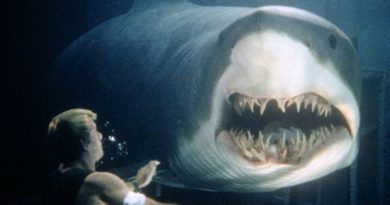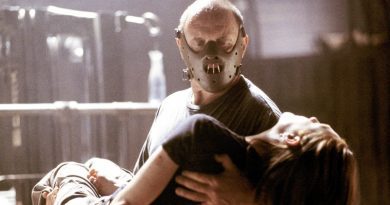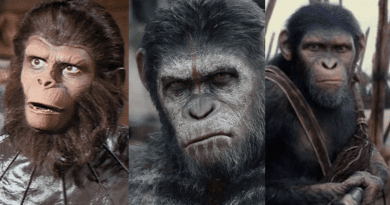Mission: Impossible at 25: The Sly, Overlooked First Film in the Franchise
(Disclaimer: This feature article contains spoilers)
Looking back at Mission: Impossible franchise today, (most) of us have grown accustomed to the film series’ signature formula and among them includes death-defying stuntwork. The latter happens to be one of the major selling points since Mission: Impossible franchise is one of those rare, expensive Hollywood blockbusters that still favoured practical stunts over CGI.
And amazingly enough, it was Tom Cruise himself who did most of his own stunts from climbing rocks with his bare hands (2000’s Mission: Impossible II) to scaling Burj Khalifa (2011’s Mission: Impossible – Ghost Protocol), hanging off on the side of a flying plane (2015’s Mission: Impossible – Rogue Nation) and performed a HALO jump out of the plane (2018’s Mission: Impossible – Fallout).
But the Mission: Impossible franchise isn’t always a stunt-heavy and action-packed spy film. At least for the first Mission: Impossible film — the one that started it all back in May 1996. Debuting two weeks after the well-received Twister, it shot straight to the No. 1 spot with a then-impressive US$45.4 million during the first 3-day weekend. The film became a big box-office hit at over US$180 million in the US alone and even accumulated a worldwide total of US$457.7 million against an US$80 million budget.
While the first Mission: Impossible did include a few stunts (more on that later), it was largely a story-driven spy film done in a classic Hitchcockian style. The plot — credited to David Koepp and Robert Towne — is significantly complex and dense than the subsequent Mission: Impossible films. I still remembered how I need to watch the film twice just to understand the labyrinthine narrative structure. And yet, that’s what made the first Mission: Impossible such a fascinating piece of work.
This is especially true with the way Brian De Palma (originally to be directed by Sydney Pollack) cleverly uses the sly concept of misdirection to tell the story. The kind that demands you to pay attention and trying to make sense of everything as the story goes on until the revelatory finale.
When I first saw Mission: Impossible back in the 90s, I initially found it hard to believe that Brian De Palma was hired to direct a big-budget film. Or more specifically, a mainstream Hollywood blockbuster since a majority of his past works was either violent Hitchcockian-style or gangster films seen in the likes of Dressed to Kill (1980), Scarface (1983) and The Untouchables (1987).
He may seem like an odd choice. But De Palma’s auteur-style direction has all his trademark filmmaking crafts stamped in the film that helps distinguished the otherwise typical summer tentpole. And it works well enough, beginning with the surveillance opening scene followed by the elaborate sequence in Prague, where Ethan Hunt (Cruise) and his IMF team are sent on a mission to retrieve the CIA’s NOC list.
Then comes the scene where Ethan Hunt meets the IMF director, Kittridge (Henry Czerny) at the glass-walled restaurant with a giant fish tank. The scene ends up with Hunt manages to escape the restaurant by blowing up the fish tank using a piece of exploding gum.
The iconic moment where Cruise jumps and run away from the water gushing out of the exploding fish tank may look like a minor stunt. But Cruise, who insisted on performing his own stunt, reportedly rehearsed many times to get it right in front of the cameras. Everything was done in a practical manner to the point that a whopping 16 tonnes of water (that’s over 16,000 litres!) were actually used for the scene.
De Palma does a great job executing a well-paced first half-hour of the film. Although the film did lags a little afterwards, De Palma manages to pick up the pace once the now-legendary vault sequence is taking place. Easily one of the most memorable moments in the Mission: Impossible franchise, the scene involved Hunt and his three team members (Ving Rhames’ Luther Stickell, Emmanuelle Béart’s Claire Phelps and Jean Reno’s Franz Krieger) as they infiltrate the CIA headquarters in Langley disguising as firefighters to steal the NOC list in a heavily-protected vault.
What follows next is a masterstroke of suspense and buildup tension — the famous scene where Hunt is being lowered down by Krieger while being suspended from the high ceiling on a wire. Here, De Palma uses the power of silence and background noise without the need for a music score to heighten the tension.

The scene grows more urgent when Krieger slipped while holding the wire attached to the winch, causing Hunt to nearly drop all the way down on the pressure-sensitive floor. With only a few inches above the ground, we see Hunt has to maintain balance while dangling horizontally. The balancing act itself wasn’t particularly an easy thing to do, where Cruise (yes, he did his own stunt) reportedly kept hitting his head on the floor. To ensure balance, he ended up with a nifty idea of using counterweights by placing coins in his shoes.
For the majority duration of the film, Mission: Impossible stays firm with the Hitchcockian-style spy thriller that emphasises the classic ingenuity of suspense, mystery and tension. But it wasn’t until the final third act that the film ventures into the contemporary summer-movie blockbuster territory: an over-the-top action sequence set on a high-speed TGV bullet train.
Despite its sudden tonal shift, the climactic finale is curiously entertaining enough in a mindless kind of way — Hunt attempts to stop Jim Phelps (Jon Voight) on top of the moving train followed by a scene where Krieger forces to navigate his helicopter inside the tunnel. To make the high-speed train sequence looks convincing, the film went as far as getting a wind machine strong enough to blow at 225 km (140 miles) per hour. All to the point we even get to see Cruise’s face distorted. It also took six weeks just to film the whole sequence, where the majority of them was shot in a more controlled environment on a soundstage (London’s Pinewood Studios).
As much as I enjoyed the first Mission: Impossible, I still couldn’t get over the fact that De Palma was daring enough to turn Voight’s Jim Phelps into an unlikely major antagonist. Phelps, who happens to be one of the prominent characters previously played by Peter Graves wasn’t originally portrayed as such in the Mission: Impossible television series. It was a result that Graves himself, who supposed to reprise his iconic role ended up declining to return altogether. Even some of the original stars from the TV series were upset about the way Phelps was handled in the film.
Although Mission: Impossible made enough money to rank as the third highest-grossing film in 1996 behind Twister (No. 2) and Independence Day (No. 1), Brian De Palma turned down the opportunity to direct the next instalment (which eventually went to John Woo instead). According to last year’s interview with AP, De Palma revealed that Tom Cruise did ask him “to start working on the next one” but he declined the offer after stated, “one of these is enough”.
Ironically, this was the last time Brian De Palma made a great film. With the exception of Snake Eyes (1998) and Femme Fatale (2002), most of De Palma’s directorial efforts following his post-Mission: Impossible success (e.g. 2000’s Mission to Mars and 2006’s The Black Dahlia) were creative failures. His recent film, Domino (2019) was one of the worst films ever directed in his otherwise illustrious career.
For Cruise, the success of Mission: Impossible marked a promising start for his then-newly established production company (Cruise/Wagner Productions). He went on to make two more Mission: Impossible films under his production banner before his co-founder Paula Wagner subsequently left the company in 2008.
The Mission: Impossible franchise proved to be a lucrative commodity for both Tom Cruise and Paramount Pictures. To date, the film has spawned five sequels, with the still-untitled Mission: Impossible 7 (at the time of writing) currently set for release on May 27, 2022.




